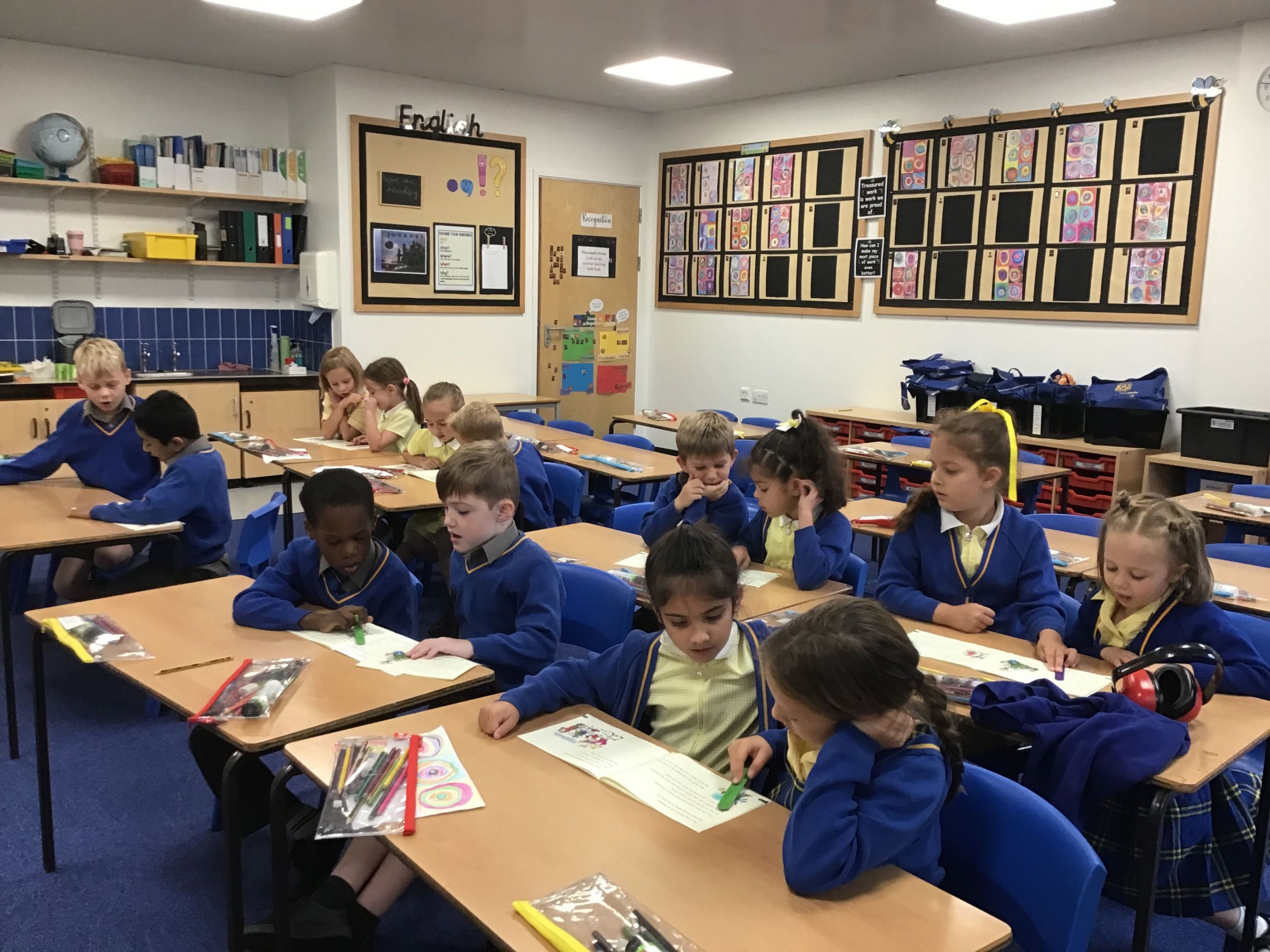Phonics- Read Write Inc - EYFS & Year 1
Phonics and Early Reading at The Marist
Our Approach to the Teaching of Reading
Reading is the single most important skill we teach at our school and our aim is for every child to be an enthusiastic and confident reader.
We can achieve this together through:
- using Read, Write, Inc; a program to help your child to read
- encouraging children to develop a love for books by reading to them daily, at home and at school and through listening to them read
- giving children access to a wide range of books at school and at home including books above their current reading level
At The Marist, we use Read Write Inc Phonics (RWI) to give your child the best possible start to their reading. We have put together this guide to show how the RWI program works, together with some useful links. Once your child gains confidence in decoding words, we can begin to concentrate on all the other skills involved in the reading process, especially on comprehension.
What is Read Write Inc?
RWI is a complete phonics program which helps all children learn to read fluently and at speed, so they can focus on developing their skills in comprehension, vocabulary and spelling. The program is designed for children aged 4-7 but we continue teaching RWI to children beyond the age of 7 if they still need support with their reading. RWI was developed by Ruth Miskin and more information on this can be found at: https://www.ruthmiskin.com/en/find-out-more/parents/
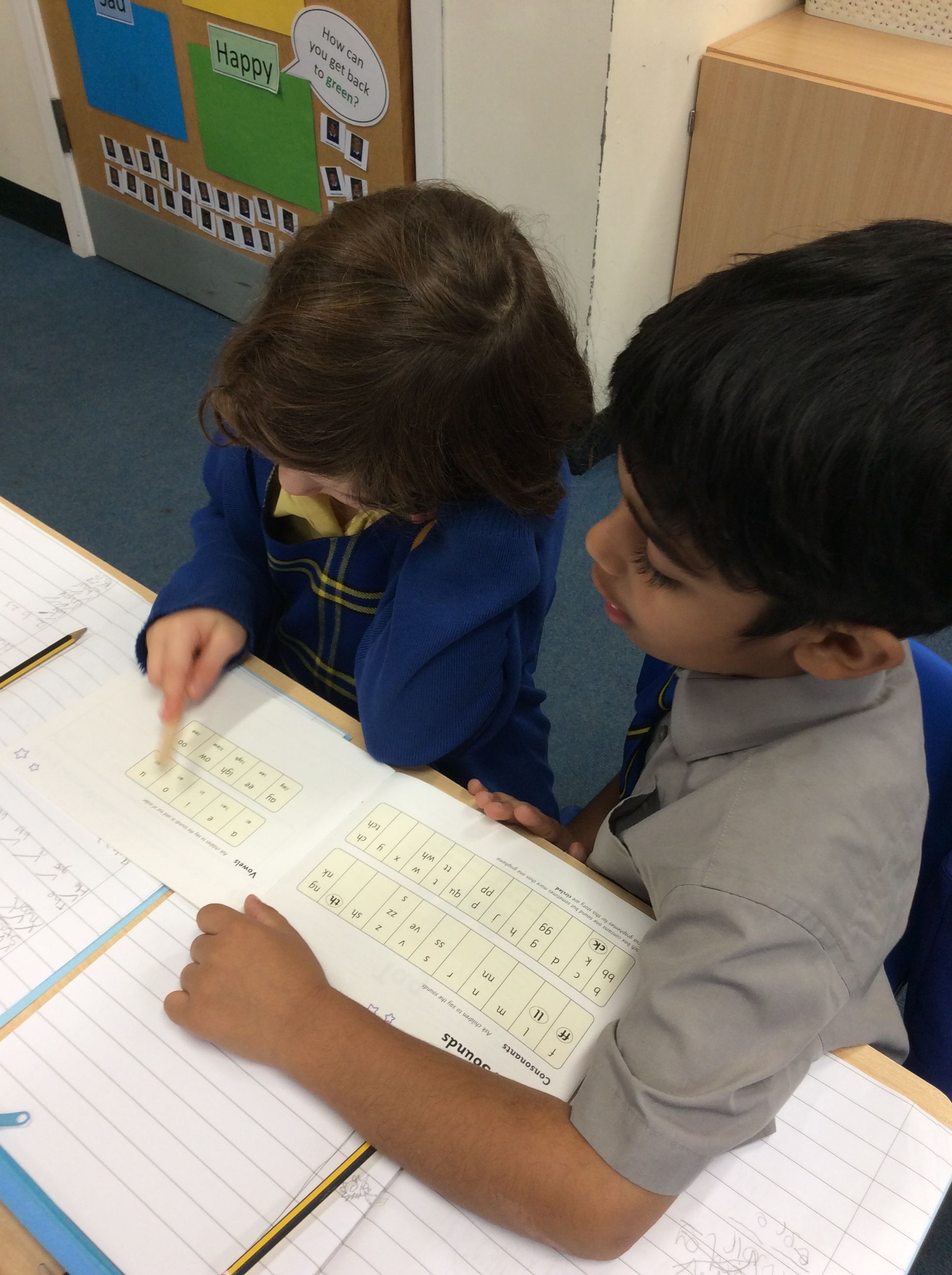
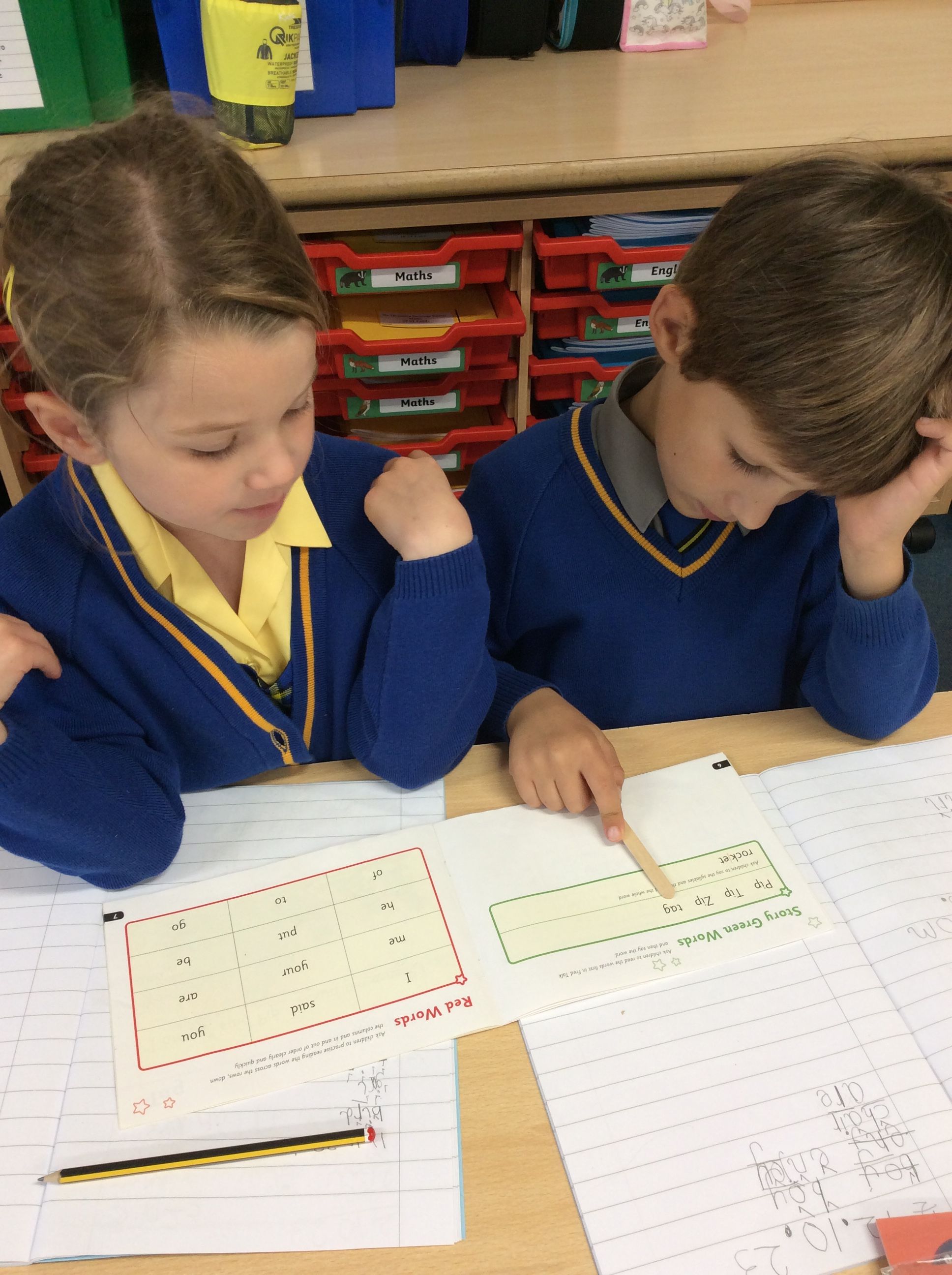
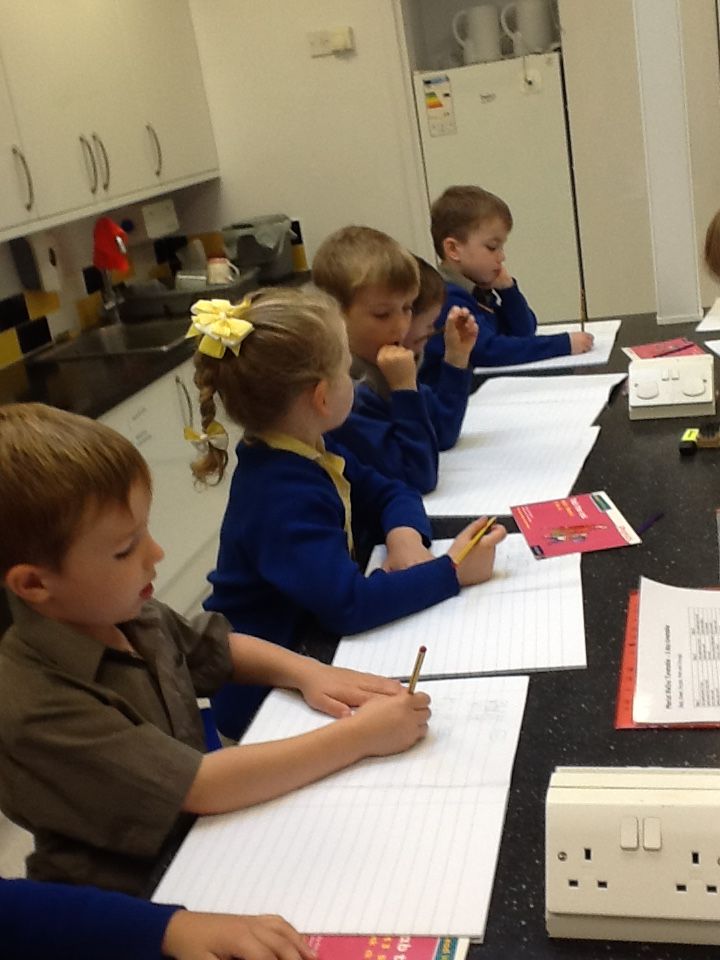
An Overview of the Program
EYFS
In EYFS, the children will learn the sounds, how to read them in words and how to write them down.
Reading
- The children learn 44 sounds and the corresponding letters/letter groups using simple picture prompts
- They learn to read words using Fred talk and sound blending
- They read from a range of story books and non-fiction books matched to their phonic knowledge
- They develop their comprehension skills through discussion and paired activities based on the books they read.
Writing
- The children learn to write and form the letters/letter groups which represent the 44 sounds with the help of fun phrases
- They learn to write/spell words by using Fred fingers
- They learn to build sentences by practising sentences out loud before they write.
In part of every lesson, children work in pairs when they:
- check correct pronunciation of sounds
- blend sounds to make words
- practise sounds and words they already know as well as the new sound
- ask and answer questions
Years One and Two
Children follow the same format as EYFS but will work on more complex sounds and read books appropriate to their reading level. Five key principles underpin the teaching in all RWI sessions:
Purpose - the purpose of every activity is shared with the children so that they can focus on the one thing they should be thinking about
Participation – ensure that each child participates throughout the whole of the lesson (this is fundamental to learning)
Praise – ensure children are praised for effort and learning, not ability
Pace – teach at an effective pace and devote every moment to teaching and learning
Passion – teachers are passionate about teaching so children can be engaged emotionally
The children are assessed on a half-termly basis and they are grouped according to the stage they have reached. This ensures each child works at an appropriate level.
How children will be taught to read
Children are taught to read the sounds we use to speak in English
Fred Talk
We use pure sounds (‘m’ not’ muh’,’s’ not ‘suh’, etc.) so that your child will be able to blend the sounds into words more easily. At school we use a puppet called Fred who is an expert on sounding out words! We call it, ‘Fred Talk’. E.g. m-o-p, c-a-t, m-a-n, sh-o-p, b-l-a-ck. For correct pronunciation of the sounds, please see:
https://www.ruthmiskin.com/en/find-out-more/parents/
The following video is an example of blending sounds with Fred. https://www.youtube.com/watch?v=dEzfpod5w_Q
The children are taught the sounds in 3 sets.
Set 1 Sounds are taught in the following order together with rhymes to help children form the letters correctly and instantly recognise sounds ready for blending. Children will also use pictures for each sound to help recognise the sound and then form the shape of the sound.Please do not use letter names at this early stage.
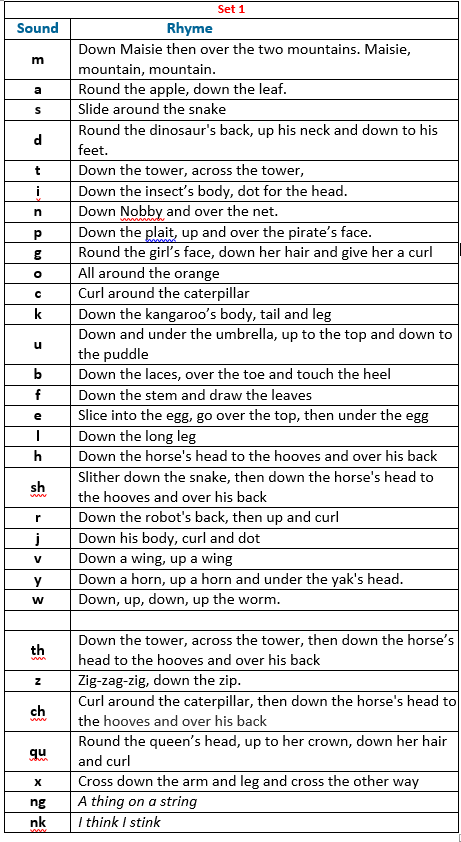
 Step 2:
Step 2:
The children are then taught Set 2 Sounds - the long vowels.
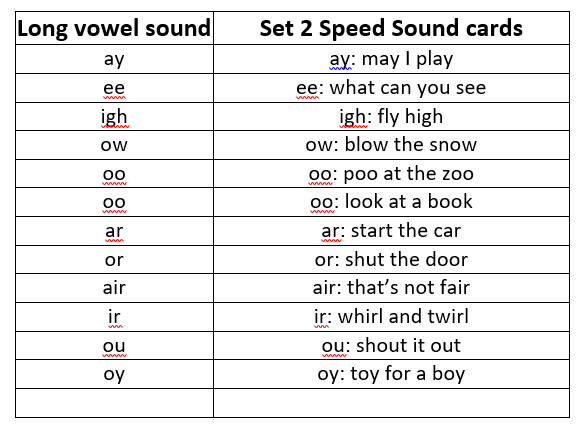
When two letters make one sound, we call these special friends eg ‘sh’. The children are taught to look for special friends before they start to sound out a word. When they are proficient at his, we ask them to do the same but use ‘Fred in your head’ when they say the sounds quietly in their heads before saying the word. From this, we will do speedy reading, when the children say the words at speed. This helps to build up fluency in reading. So whenever your child is decoding a new word at home, prompt them with the following:
‘Special friends, Fred talk, read the word.’
When they are very confident with all of set 1 and 2, they are taught Set 3 Sounds.
Nonsense words (Alien words)
As well as learning to read and blend real words, children will have plenty of opportunities to apply their sound recognition skills to read ‘Alien’ or ‘Nonsense words’. These words will also feature heavily in the Year One Phonics Screening check in the summer term and will always have a picture of an alien beside them.
The ability to read nonsense words is important because it means that children can then go on to decode some very difficult words such as ‘gargantuan, flailing, raucous, anticipation’.
First Books
Children will be introduced to ‘Ditty books’ when they successfully begin to read single words. In these books, the short vowels are kept short and sharp. Children use sound-blending (Fred Talk) to read short ditties. Once they progress from Ditties, they start to read books. They will bring these home once they have read and discussed the book in class.

Within all the books, children will have red and green words to learn to help them to become speedy readers. Red words are words that are not easily decodable and challenge words to extend children’s vocabulary. Green words are linked to the sounds they have been learning and are easily decodable.
During the RWI session, children will read the book three times and at each new reading, they will have plenty of opportunities to practise using their developing comprehension skills. When it comes to reading books, the children become familiar with the following routine: read once or more to decode, once or more for fluency and once or more for comprehension.
Writing within the lesson
During the lessons, children are often asked to write a sentence to practise the new sounds and words. You may have heard your child talking about ‘hold a sentence’. This is an activity that encourages children to remember a whole sentence while focusing on spelling and punctuation. The children orally rehearse the sentence, write it together with the adult, write independently and finally have the opportunity to 'tick and fix' their sentence.
Spelling
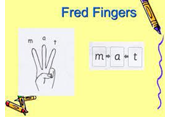
Children will first use ‘Fred fingers’ to first sound out a word before they write it down. This way of teaching spellings allows children to use Fred fingers whenever they get stuck with spelling a word. Children pinch each sound on fingers before writing the word. Please ensure your child uses this technique whenever he/she is spelling words at home.
Order of Story books: Children will hopefully follow the order listed below. The expectation is that all children will leave Year One as confident speedy readers, ready to take on the challenges of Year Two. However, some children may need extra support and your teacher will talk to you about this.
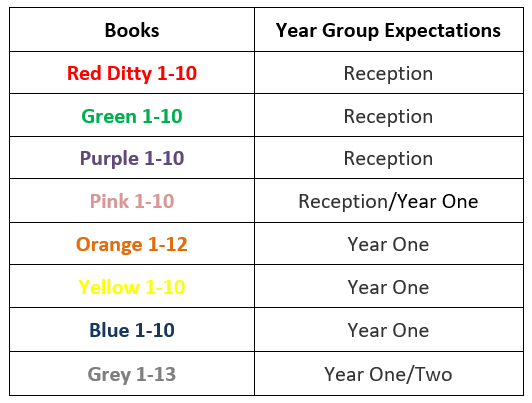
To help at home:
Your child will start to bring books home when they are confident readers. Please help them to read and give lots of praise! If you have any other questions about RWI, please see your class teacher or see Mrs Cheadle or Mrs Wright.
Phonics Screening Check Year One
What is the Year 1 phonics screening check?
The Year 1 phonics screening check is a short, light-touch assessment to confirm whether individual pupils have learnt phonic decoding to an appropriate standard.
It will identify the children who need extra help so they are given support by their school to improve their reading skills. They will then be able to retake the check so that schools can track pupils until they are able to decode.
Useful Links
Please find a list of websites that you may find useful in helping you and your child to learn about phonics. Games and fun activity websites are also included.
https://home.oxfordowl.co.uk/reading/reading-schemes-oxford-levels/read-write-inc-phonics-guide/
https://www.ruthmiskin.com/en/find-out-more/parents/
http://www.phonicsplay.co.uk/ - many games to play
http://www.ictgames.com/literacy.html - fun games for the children to play
BBC Bitesize - many games to play covering all areas of the curriculum
The following is a free programme of games which helps the children recognise sounds and read words and sentences https://www.teachyourmonstertoread.com/


